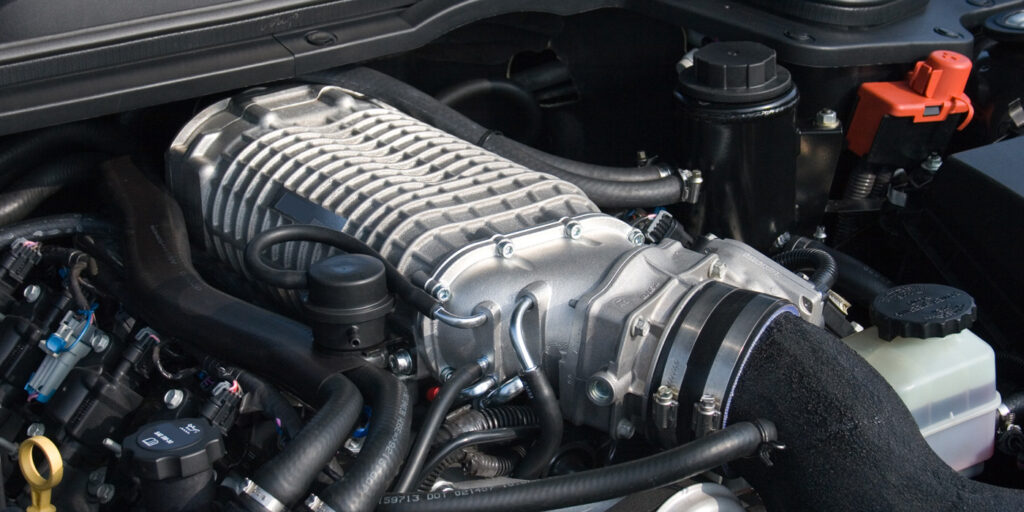By Larry Carley
Technical Editor
Shock absorbers are an important suspension component because they dampen suspension motions to provide ride control. This provides a smoother ride, better handling and cornering, and improved stability (especially on rough roads). The shocks also extend the life of the tires by preventing unnecessary bouncing as the tires roll along, and they help improve braking and traction by keeping the tires in firm contact with the road.
Struts are a little different because in addition to performing all the functions of a shock absorber, they are also part of the suspension itself. Up front, they replace the upper control arm and upper ball joint on many cars. In the rear, they help support and locate the rear axle or trailing arms. The strut may also have a coil spring wrapped around it to support the weight of the vehicle.
As shocks and struts age, their ability to dampen suspension jounce and rebound gradually diminishes. The change is usually so slow and subtle that the average motorist may not even be aware how weak his shocks have become.
Some original equipment shocks may be getting weak after 30,000 to 40,000 miles of normal driving. For original equipment struts, 60,000 or 70,000 miles may be the limit of their useful service life.
Any shock or strut that cannot pass a simple bounce test (no more than one or two gyrations after rocking and releasing the suspension) should be replaced. The same goes for any shock or strut that is leaking fluid.
As a rule, shocks and struts should always be replaced in pairs (both fronts, both rears, or all four) to maintain consistent ride control side-to-side. The hardest part of replacing shocks is getting at the upper shocks mounts, which on some vehicles can only be accessed from inside the trunk or passenger compartment (behind the back seat).
Struts are an entirely different matter. On vehicles where the spring is on the strut, replacing the strut requires the use of a special spring compressor to disassemble the strut. This can be a dangerous job if not done carefully because of the considerable tension the spring exerts on the upper bearing plate assembly.
In recent years, more monotube gas shocks and struts have been used as original equipment dampers on performance and luxury vehicles. In a twin tube direct-acting shock, there is an inner tube for the piston cylinder, and an outer tube that serves as a fluid reservoir. Valves in the piston and in the bottom of the shock control fluid flow in both directions, and determine the dampening characteristics of the shock. In a monotube shock, there is no outer fluid reservoir. There is only a single tube, and a floating piston separates the fluid inside from a high pressure gas charge inside the shock or strut.
The gas charge in both twin tube and monotube shocks and struts is there to reduce fluid foaming when the damper is pumping hard. Without the gas charge, the fluid cavitates and forms tiny air bubbles as the piston pumps up and down. The fluid turns to foam and the shock starts to fade (weaken). Adding the gas charge stops this from happening, and keeps the shock firm even on the roughest roads.
Over time, however, the gas charge may slowly seep out of the shock or strut, causing it to lose much of its original ride control ability. Monotube shocks are more expensive to manufacture than twin tube shocks because they require a highly polished inner surface. Even so, they do have some advantages over twin tube shocks and struts:
• The monotube design provides better heat dissipation and cooling than a twin-tube shock. There is no outer tube or fluid reservoir to inhibit heat flow, so a monotube shock runs cooler and delivers more consistent ride control.
• A monotube shock is lighter than a twin-tube shock that has the same external diameter. This reduces unsprung weight and allows the wheels and tires to follow the road more closely.
• A monotube shock can be mounted in any position. A twin-tube shock uses gravity to drain the fluid down through the valving in the bottom, and to maintain the gas charge in the outer reservoir.
• A monotube shock has a larger diameter piston than a twin-tube shock with the same external dimensions, which gives the shock greater sensitivity for small piston motions.
• Monotube shocks are used for many aftermarket coil-over applications because of their compact design. Many also have adjustable valving so the ride characteristics can be fine-tuned or changed depending on how the vehicle is being driven.











